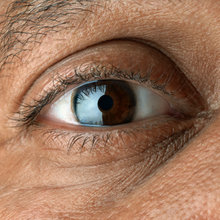Pavilion Publishing and Media Ltd
Blue Sky Offices Shoreham, 25 Cecil Pashley Way, Shoreham-by-Sea, West Sussex, BN43 5FF, UNITED KINGDOM
 NICE has published final guidance on EYLEA (aflibercept solution for injection) for the treatment of patients with visual impairment due to diabetic macular oedema (DMO), a condition that affects about 50,000 people in the UK.
NICE has published final guidance on EYLEA (aflibercept solution for injection) for the treatment of patients with visual impairment due to diabetic macular oedema (DMO), a condition that affects about 50,000 people in the UK.
The positive final decision means that people in England and Wales with DMO and a central retinal thickness of 400 micrometers or more will now have access to an additional effective treatment option that offers them a clearly defined treatment plan.
EYLEA needs to be given by a trained physician and treatment starts with one injection per month for 5 consecutive doses, followed by 1 injection every 2 months without the need to visit the hospital for monitoring between injections. After the first 12 months of treatment, the time between injections may be extended based on how well the treatment is working.
The licence for EYLEA for the DMO indication was granted in August 2014 based on data from the pivotal VIVID-DME and VISTA-DME studies, which showed that it is capable of delivering sustained visual acuity gains compared to laser photocoagulation after two years of receiving EYLEA 2mg every other month, after 5 initial monthly injections.
In the VIVID-DME study, the mean gain from baseline for best corrected visual acuity (BCVA) was 9.4 letters (10.7 letters at one year; p
In both studies EYLEA was well tolerated with a similar overall incidence of adverse events (AEs), serious ocular AEs and serious non-ocular AEs compared to laser photocoagulation. The most frequent ocular treatment emergent AEs (TEAEs) observed in the VIVID-DME and VISTA-DME studies included conjunctival haemorrhage, eye pain and floaters in the eye. The most frequent non-ocular TEAEs included hypertension and cold symptoms. Arterial thromboembolic events (non-fatal stroke, non-fatal myocardial infarction and vascular death) also occurred at similar rates with EYLEA compared to laser photocoagulation.
This is the third positive NICE recommendation for EYLEA. It received its first NICE recommendation for wet age-related macular degeneration (wAMD) in July 2013 and the second recommendation for visual impairment due to macular oedema secondary to central retinal vein occlusion (CRVO) in February 2014.
In EYLEA was licensed for visual impairment due to macular oedema secondary to branch retinal vein occlusion (BRVO).
Funding for EYLEA is now mandated across England and Wales for the treatment of eligible patients with wAMD and visual impairment due to macular oedema secondary to CRVO.
Professor Sobha Sivaprasad, Consultant Ophthalmologist, Moorfields Eye Hospital and King’s College Hospital London, commented: “For other eye conditions, such as wet AMD, EYLEA has already allowed us to achieve positive visual outcomes in real-life clinical practice, reflective of those seen in the pivotal clinical trials. To achieve these results in over-burdened NHS eye clinics is impressive and is mainly down to its simple dosing schedule that allows us to deliver treatment in a fashion as close to the clinical trial protocol as possible. It is therefore great news that we now have the opportunity to achieve similar results for people with visual impairment due to DMO; a patient group that is on the rise and already having to manage numerous appointments for their diabetes alongside their busy day to day lives.”
The NHS in England and Wales has 90 days to implement this guidance to ensure that all eligible patients have access to EYLEA as soon as possible.


